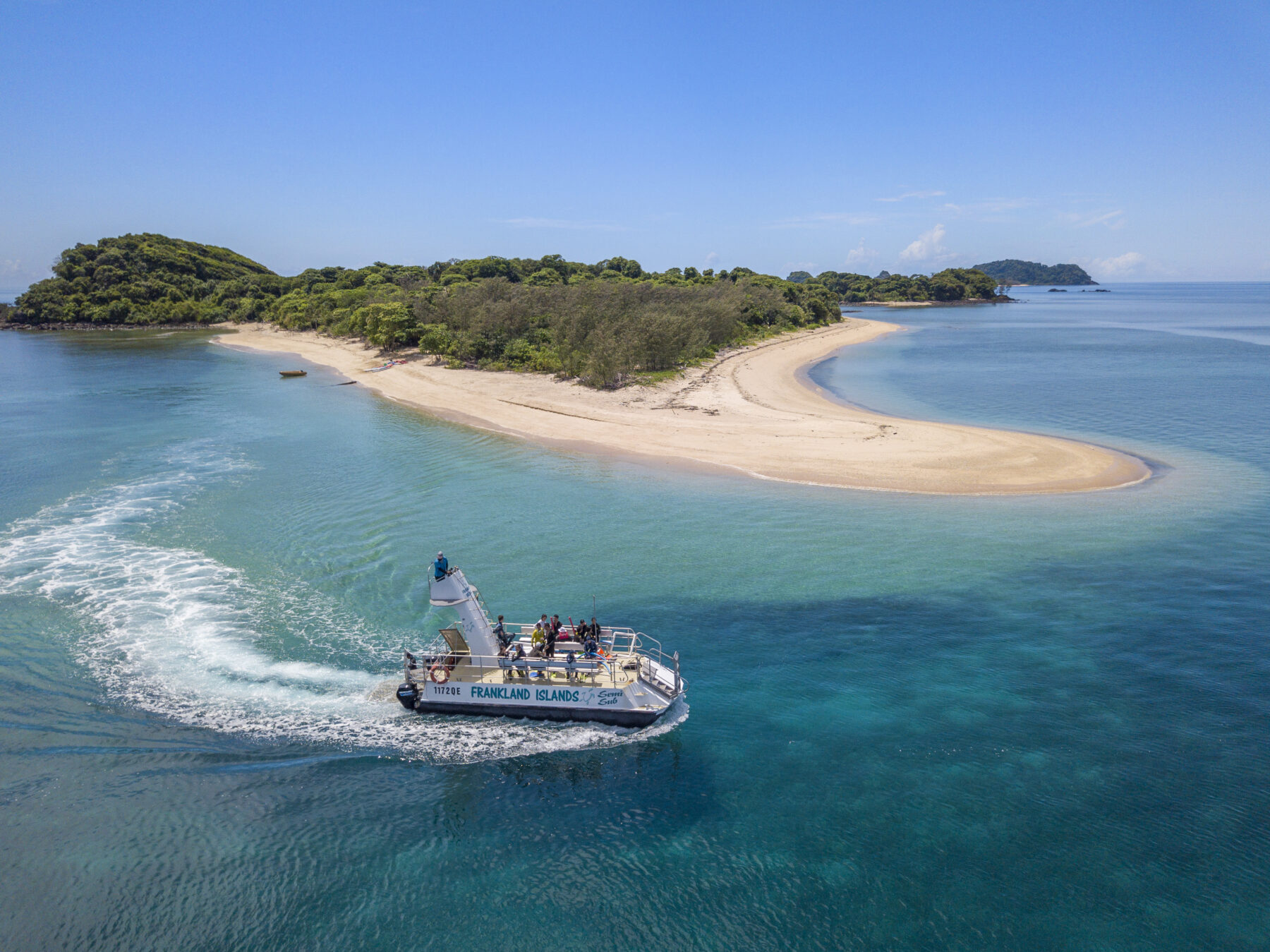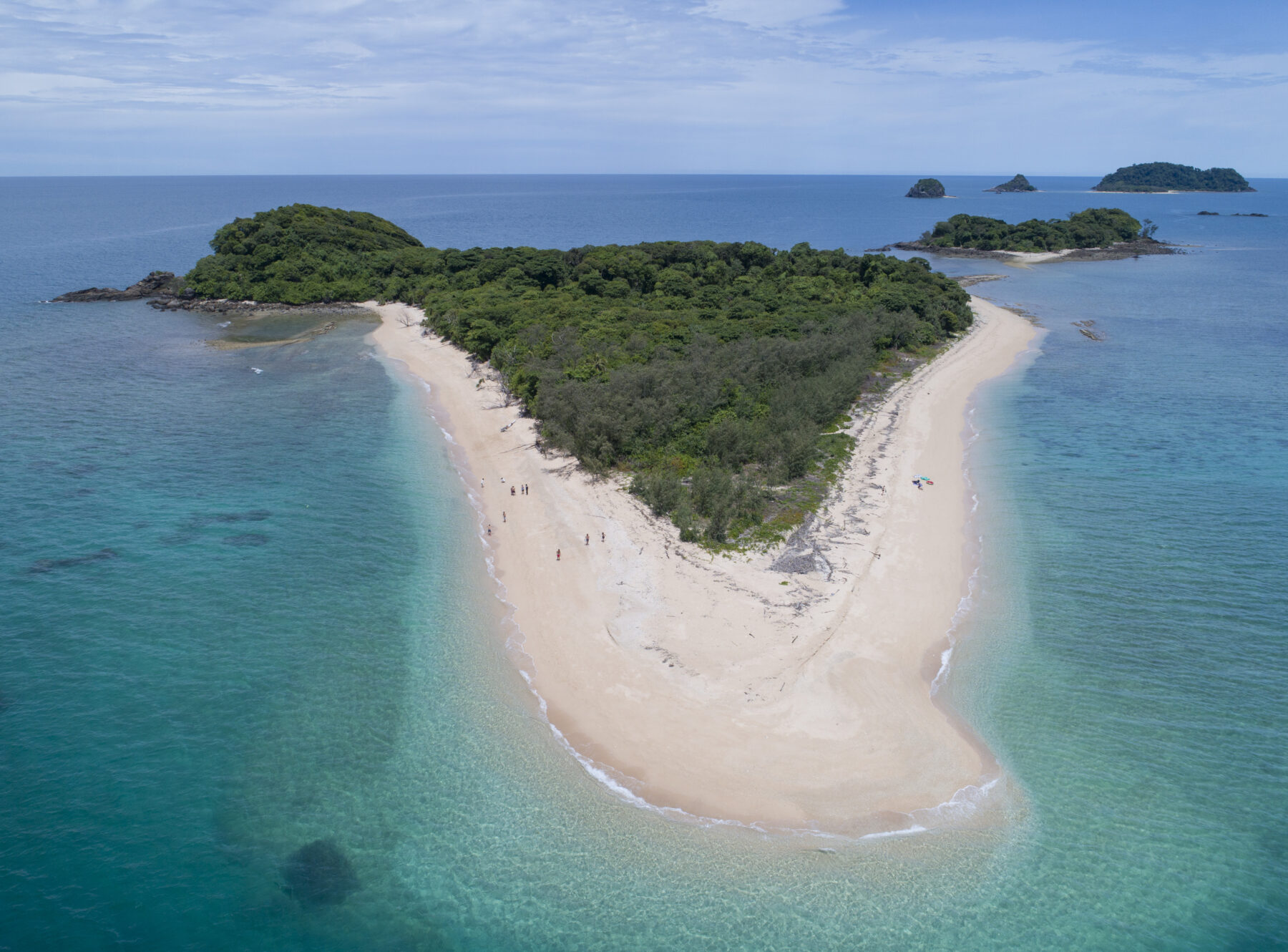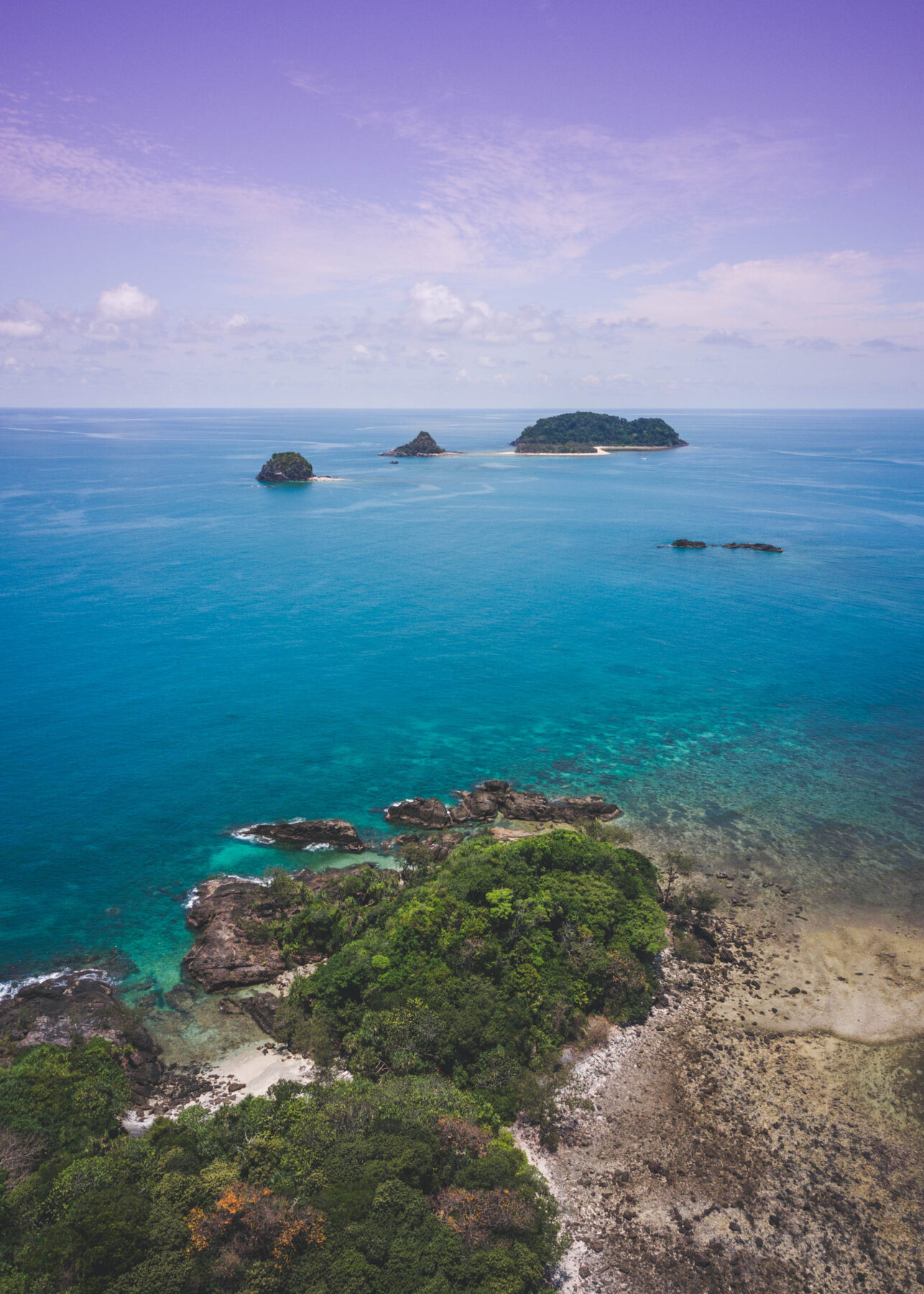Caring for paradise, one trip at a time in the Frankland Islands

This article is brought to you by Australian Wildlife Journeys.
The Great Barrier Reef’s Frankland Islands are a ‘beautiful one day, perfect the next’ kind of place. But this Far North Queensland archipelago is far more than a tropical idyll – think rare, star-shaped sand, Ice Age-era plant life, and an ocean that pops with Nemos, Dories and Crushes.
But even before you reach the islands, there are wonders aplenty – UNESCO World Heritage-listed rainforest, sprawling fields of sugar cane and the highest freestanding natural pyramid in the world – iconic Walsh’s Pyramid.


Image credit: Australian Wildlife Journeys
Your day trip to the archipelago begins on the Mulgrave River, where saltwater crocodiles laze on mangrove-lined banks and birds bustle in the overhanging canopy.
From the mouth of the Mulgrave, it’s a 10km trip to Normanby Island – the shortest open-water crossing of any of the Cairns day tours – at the heart of the Great Barrier Reef.
Frankland Islands Reef Cruises is the only commercial operator licensed to land on Normanby and carries only 100 guests at a time on its spacious and comfortable Turtle Islander vessel. According to reef guide Andy Ratter, “Once we’re on the island, we customise the day to suit people’s interests – from snorkelling to guided island tours, exploring the sea floor [while staying dry] on our semi-submarine tour, kayaking and stand-up paddle boarding.”



Image credit: Australian Wildlife Journeys
The Frankland Group National Park is an archipelago located about 45km southeast of Cairns. The group’s five continental islands (Normanby, High, Russell, Round and Mabel) are part of the World Heritage-listed Great Barrier Reef Marine Park.
All the islands are uninhabited and surrounded by healthy fringing reefs, full of hard and soft corals, giant clams, schools of fish, turtles, rays and more. Dugongs and whales are often sighted here, and during the months of May and June, manta rays visit the shallow fringing reefs around the islands.
“There’s plentiful coral straight off the beach,” Andy says. “But for guests who want to go deeper, we offer a 45-minute guided snorkel safari to explore some of the best areas of reef around the island.”

Image credit: Australian Wildlife Journeys
As well as guiding, Andy and his colleagues use their time in the water to monitor the reef.
“We’re in the water most days of the week and have been trained by [assessment program] Eye on the Reef to conduct Tourism Weekly surveys to monitor water quality, reef health and algal build-up, as well as monitoring both keystone and iconic species and reporting on coral health,” Andy says.
“The fringing reef around the island differs in several ways to the reefs visited by most boats departing from Cairns, due to the nature of the currents around the islands and the proximity to the mainland, and particularly the outflow from the Mulgrave/Russell river system.
“These factors have led to a very dense and resilient reef system, with abundant seagrass in the shallows supporting a population of turtles [both green and hawksbill] often seen in very shallow water. This is particularly evident on the western [inland-facing] side of the island, where the snorkel safari usually takes place.
“There are also many sea anemones close to shore, including a very unusual variety of blue giant carpet anemone. Unlike other reefs, where a wide variety of different species of anemone fish predominate, our anemones are populated almost exclusively by true clownfish, more commonly known as Nemo.”


Image credit: Australian Wildlife Journeys
Guides also host an island walk on Normanby, which takes about an hour and, Andy says, explores the history, geology and natural flora and fauna of the island and its surrounding reefs.
“Normanby’s highest peak is 20m,” he says. “It’s a continental island and is home to rainforest vegetation as well as coastal species. The cool-water channels surrounding the island keep sea temperatures lower during the hot summer months.”
“As part of the Great Barrier Reef, Normanby formed 6,000–10,000 years ago, when, at the end of the last Ice Age, waters rose up to 120m to flood the coastal plains and produce the islands we see today. This process is noted in the geological record as well as in the traditional oral histories of the local Indigenous peoples.”
According to Andy, the island is slowly “growing” because of ongoing sand and coral deposition.
“Storms and cyclones impact the island and contribute to the accumulation of broken corals, which form a large part of the beaches.
“At different points on the tour, we stop to look at the types of corals [branching, plate, boulder] in the sand, and explain the life cycles of the individual coral animals.
“We also discuss the threats to the ongoing health of the reef – climate change, including bleaching due to increasing ocean temperatures, ocean acidification, more frequent cyclones and crown-of-thorn starfish outbreaks.”


Image credit: Australian Wildlife Journeys
At low tide, guides and guests spend time in the exposed intertidal rockpools searching for animals including starfish, giant clams, sea cucumbers, shellfish, stingrays, small hunting sharks, seabirds and even turtles.
“One of the things our guests enjoy most about the rockpools is meeting the resident clownfish in water at a depth of only a few inches.”
On the beach itself, there are collections of washed-up seeds, including those of the mangrove. “They’re such an important part of the Great Barrier Reef in terms of coastal protection, carbon capture and fish nursery habitat,” Andy says.
At the southern end of the island is “star-sand” that, Andy says, are tiny, perfectly formed star-shaped granules.
“These are ‘tests’ [calcium carbonate shells]. They’re all that remain of the living foraminifera [aka forams], single-celled protozoan creatures that inhabit the surrounding waters.”
While there are many different species of forams, which are abundant in the sea, these varieties appear to be very rare, initially known from only a few islands in southern Japan. “The Frankland Islands appear to be one of the only areas in the southern hemisphere where they are reliably found,” Andy says.
At day’s end, Turtle Islander follows the sun west towards ‘home’, leaving in its wake an ocean full of turtles, sharks and rays, rockpools full of starfish, anemones and Nemo, and a seashore littered with glistening, star-shaped sand. All being diligently cared for by Andy and his fellow reef guides.



Image credit: Australian Wildlife Journeys
Frankland Islands Reef Cruises is part of the Australian Wildlife Journeys collective. Find out more here.
This article is brought to you by Australian Wildlife Journeys.

